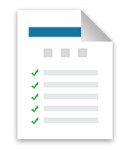The Resuscitation Council (UK) has taken advice from several sources. A PGD is not required for anyone (whether they are a healthcare professional or not) to give intramuscular adrenaline for the purpose of saving a life in an emergency.
The Statutory Instrument (SI) is 1997 The Prescription Only Medicines (Human Use) Order no 1830. It can be found on the website www.legislation.gov.uk (formerly at HMSO). This Statutory Instrument amends the main Statutory Instrument on prescribing which is the Medicines (Products other than veterinary drugs)(prescription only) order 1983 Statutory Instrument;
Article 7 of the 1997 SI states:
"The restriction imposed by s58 (2)(b) (restriction on administration) shall not apply to the administration to human beings of any of the following medicinal products for parenteral administration: Adrenaline injection 1 in 1000 (1 mg in 1mL), Atropine sulphate injection, Chlorpheniramine [chlorphenamine] injection, Cobalt edetate injection, Dextrose injection strong BPC, Diphenhydramine injection, Glucagon injection, Hydrocortisone injection, Mepyramine injection, Promethazine hydrochloride injection, Snake venom antiserum, Sodium nitrate injection, Sodium thiosulphate injection, Sterile pralidoxime. Where the administration is for the purpose of saving life in an emergency".
The impact of this article is that where parenteral administration is being used (this is defined as administration by breach of the skin or mucous membrane), and it is for an emergency to save life, then s.58(2)(b) does not apply. This section states that no administration shall take place unless it is by an appropriate practitioner or a person acting in accordance with the directions of an appropriate practitioner.
Also the Medicines, Ethics and Practice guide for pharmacists and pharmacy technicians, issued by the Royal Pharmaceutical Society of Great Britain (updated July 2007), states that intramuscular adrenaline injection (1 in 1000) is exempt from requiring a prescription when given for the purpose of saving a life in an emergency. This is also based on article 7 of the prescription-only medicines (POM) order.
This means that any nurse, teacher, parent, etc can administer adrenaline (or any of the other named drugs) if the purpose is to save life, without needing permission from an authorised prescriber. If they do this, they will not commit an unlawful act under the Medicines Act 1968. It is only for adrenaline that a dosage is stated. This means that for dosages of adrenaline over 1mg in 1mL, the directions of a prescriber are needed if it is not being given by a prescriber.
PGDs are only valid for the NHS, defence medical service, police custody, independent sector clinics or hospitals that are registered with the Healthcare Commission.
Some Trusts may still wish to have a PGD in place as a framework to guide local practice and training needs. This is their choice as they are the ones who are vicariously liable for their practitioners. It is important that trained staff are not put in the position that they feel they cannot give adrenaline for anaphylaxis because they think they are “not covered” for this.
Further information is available on the national Patient Group Directions website.


